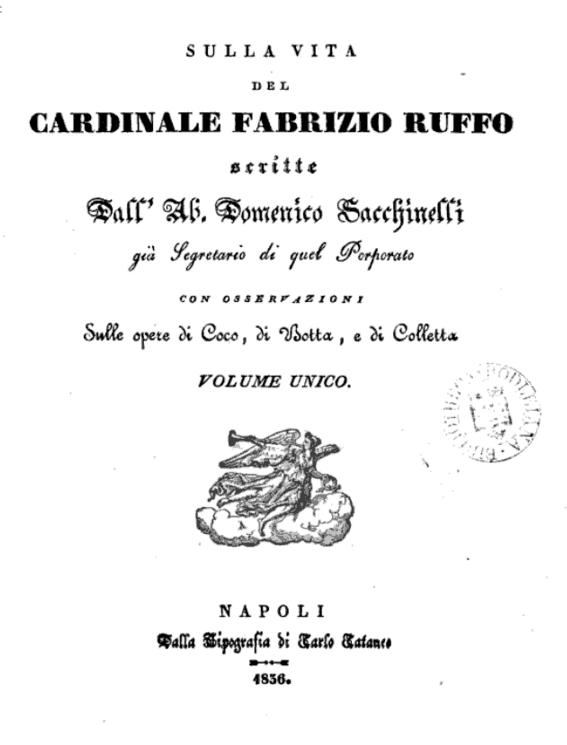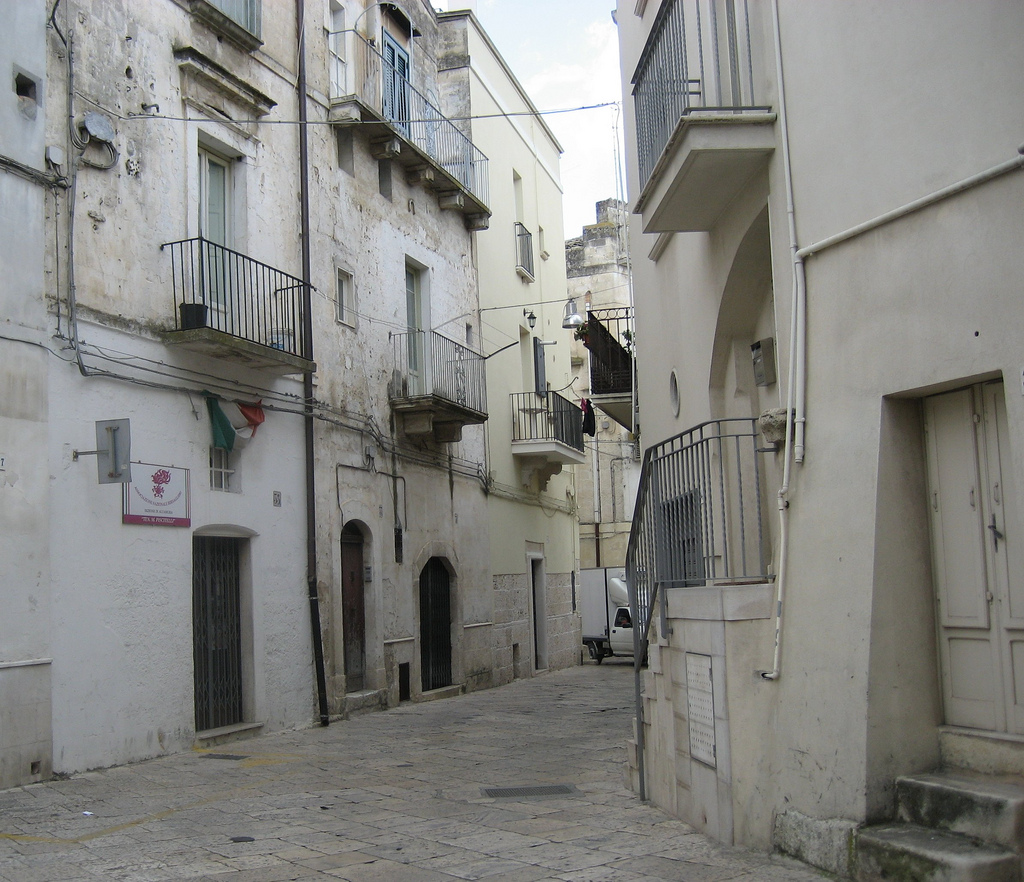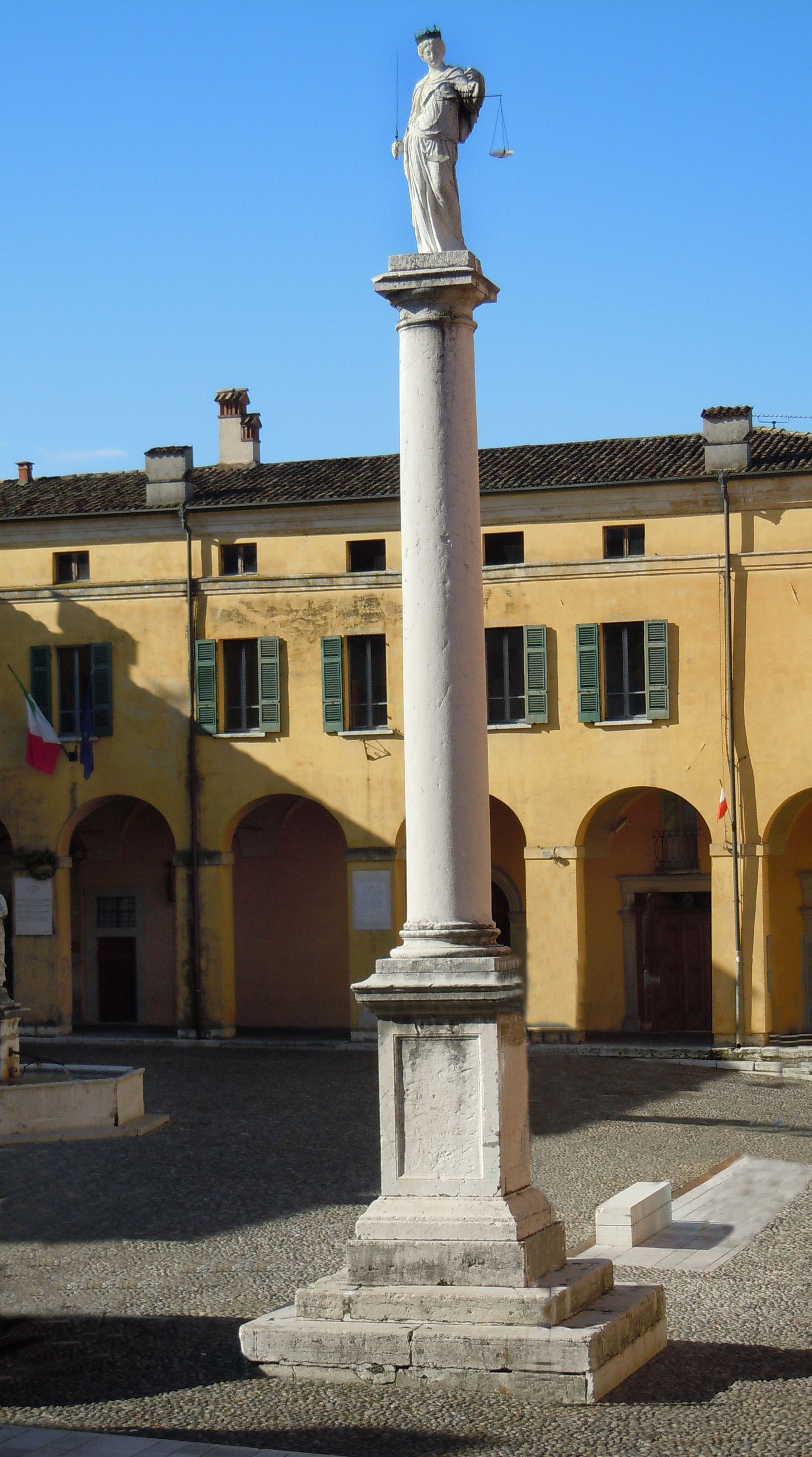|
Altamuran Revolution
The Altamuran Revolution ( it, Rivoluzione di Altamura, also ''Rivoluzione altamurana'') was a three-month period of self-government of Italian town Altamura, right after the birth of the Parthenopean Republic (23 January 1799) which ousted the Bourbons and the Kingdom of Naples. The city of the Kingdom of Naples was then defeated and taken by the so-called Sanfedisti, led by cardinal Fabrizio Ruffo, after a battle on the city walls. After being defeated, most Altamurans managed to flee through '' Porta Bari'', one of Altamura's main gates. In February 1799, the news that the king had fled to Palermo arrived in Altamura. Altamura population then reorganized and embraced the ideals propagated by the French Revolution. The Liberty Tree was also planted in what it was then called ''piazza del mercato'' (today it's called '' piazza Duomo''). In the meantime, the Sanfedisti, led by the cardinal Fabrizio Ruffo, were getting closer and closer, determined to restore the Kingdom of Naples ... [...More Info...] [...Related Items...] OR: [Wikipedia] [Google] [Baidu] |
Arnaldo Zocchi
Arnaldo Zocchi (20 September 1862 – 17 July 1940) was a noted Italian sculptor of the late 19th and early 20th century. He was born in Florence and died in Rome. He studied sculpture in Florence under his father Emilio Zocchi. Works Italy *Four Winged Victories at the Monument of Vittorio Emanuele II n Rome (co-work with three other sculptors) *Monument to Garibaldi in Bologna (1901) *Monument to Michelangelo in Caprese Michelangelo (1911) *Monument to the Martyrs of the Altamuran Revolution * Monument to the Fallen in World War I, (piazza Zanardelli, Altamura) *Monument to the Fallen in Sarteano *Monument to the Fallen in World War I in Nomentano, Rome (1938) *Monument to Manuel Belgrano in Genoa (1927) *Monument to Piero della Francesca in Sansepolcro (1892) *Monument to Christopher Columbus in Lavagna (1930) Bulgaria * Demeter Fountain in Plovdiv (1891), * Monument of Liberty in Rousse (1900s) *Monument to the Tsar Liberator in Sofia (1907) *Various works in Sevli ... [...More Info...] [...Related Items...] OR: [Wikipedia] [Google] [Baidu] |
Bourbons
The House of Bourbon (, also ; ) is a European dynasty of French origin, a branch of the Capetian dynasty, the royal House of France. Bourbon kings first ruled France and Navarre in the 16th century. By the 18th century, members of the Spanish Bourbon dynasty held thrones in Spain, Naples, Sicily, and Parma. Spain and Luxembourg have monarchs of the House of Bourbon. The royal Bourbons originated in 1272, when the youngest son of King Louis IX married the heiress of the lordship of Bourbon. Anselme, Père. ‘'Histoire de la Maison Royale de France'’, tome 4. Editions du Palais-Royal, 1967, Paris. pp. 144–146, 151–153, 175, 178, 180, 185, 187–189, 191, 295–298, 318–319, 322–329. (French). The house continued for three centuries as a cadet branch, serving as nobles under the Direct Capetian and Valois kings. The senior line of the House of Bourbon became extinct in the male line in 1527 with the death of Charles III, Duke of Bourbon. This made the junior Bourbon ... [...More Info...] [...Related Items...] OR: [Wikipedia] [Google] [Baidu] |
La Gazzetta Del Mezzogiorno
''La Gazzetta del Mezzogiorno'' (lit. "Gazette of the South") is an Italian daily newspaper, founded in 1887 in Bari, Italy. It is one of the leading newspapers published in Southern Italy, with most of its readers living in Apulia and Basilicata. ''La Gazzetta del Mezzogiorno'' suspended its publication temporarily on 1 August 2021 due to financial crisis and court proceedings against its owner, Mario Ciancio Sanfilippo. The newspaper resumed publications on 19 February 2022. History and profile ''Gazzetta del Mezzogiorno'' was first published on 1 November 1887 in Bari, Italy, by the magazine editor Martino Cassano to fill the niche for a local newspaper in Bari despite Apulia's high rate of illiteracy; it measured at 70% in 1905. Originally published as the ''Corriere delle Puglie'', its current title began to be used by editor Raphael Gorjux on 26 February 1928. The editor-in-chief of ''Gazzetta del Mezzogiorno'' was Giuseppe de Tomaso until 2021. Since the 1990s the paper h ... [...More Info...] [...Related Items...] OR: [Wikipedia] [Google] [Baidu] |
Tommaso Fiore
Tommaso Fiore (7 March 1884 – 4 June 1973) was an Italian meridionalist writer and a socialist intellectual and politician. He is known for his attention and his descriptions and studies on the inhumane conditions of Southern Italian and often specifically Apulian peasants at that time. He is also known for his Viareggio Prize-winning book ''Un popolo di formiche'' ("A people of ants"). In the 1920s, he was appointed as mayor ( it, sindaco) of his hometown Altamura. During the twenty-year period of the Italian Fascist era, he strenuously opposed the regime before being sent into internal exile in 1942 and then being jailed in 1943. Life Tommaso Fiore was born in a working-class family on 7 March 1884. After completing higher education in a seminary school located in Conversano (as it was normal at that time for gifted students who couldn't afford public high schools), he studied classical literature at university and then he taught inside Italian classical lyceum schools. ... [...More Info...] [...Related Items...] OR: [Wikipedia] [Google] [Baidu] |
Domenico Sacchinelli
Domenico Sacchinelli (18 April 1766 - 6 July 1844) was an abbot of the Catholic church. He is best known for having followed and helped Fabrizio Ruffo and the '' Sanfedisti'' army to restore the Kingdom of Naples and the Bourbon dynasty, after the short-lived Parthenopean Republic (1799). In 1836, after a few decades, he published his memoirs of that period, titled ''Memorie storiche sulla vita del cardinale Fabrizio Ruffo''. Life Domenico Sacchinelli was born in Pizzoni, Calabria (Italy), from Francesco Sacchinelli and Serafina Conciatore,Govanni Pititto, Archivio Storico della Calabria - Nuova Serie - Anno I. Numero 1, Nota n.36. Luigi Pellegrini Editore. Cosenza -201/ref> who decided to give him a good education; they also wanted him to become a monk. Nonetheless, when he was just 18 years old, he decided to leave his hometown in order to get a job as a scribe in the city of Catanzaro, inside the '' Cassa sacra''; this was an institution founded by king Ferdinand I of the ... [...More Info...] [...Related Items...] OR: [Wikipedia] [Google] [Baidu] |
Luca De Samuele Cagnazzi
Luca de Samuele Cagnazzi (28 October 1764 – 26 September 1852) was an Italian archdeacon, scientist, mathematician, political economist. He also wrote a book about pedagogy and invented the tonograph. Life Born at Altamura, in what is now Apulia, he taught mathematics and physics in the University of Altamura under the rectorship of Msgr. Gioacchino de Gemmis. In 1799 he first moved to Florence, where he worked as a teacher and then he moved to the University of Naples Federico II where he became a professor of statistics and of economics, and a member of the Royal Society of Encouragement to Natural Sciences of Naples. He also became head of the Office of Statistics and Trade of the Kingdom of Naples, under Joachim Murat's rule, and he kept that position until 1821. He was a frequent contributor to the Italian journal ''Il progresso delle scienze, delle lettere e delle arti'', of which he was also editor for a short time. In 1848, at age of 84, he was elected memb ... [...More Info...] [...Related Items...] OR: [Wikipedia] [Google] [Baidu] |
Jacobin Club
, logo = JacobinVignette03.jpg , logo_size = 180px , logo_caption = Seal of the Jacobin Club (1792–1794) , motto = "Live free or die"(french: Vivre libre ou mourir) , successor = Panthéon Club , formation = 1789 , founder = Maximilien Robespierre , founding_location = Versailles, France , dissolved = , type = Parliamentary group , status = Inactive , purpose = Establishment of a Jacobin society * 1789–1791: abolition of the Ancien Régime, creation of a parliament, introduction of a Constitution and separation of powers * 1791–1795: establishment of a republic, fusion of powers into the National Convention and establishment of an authoritarian-democratic state , headquarters = Dominican convent, Rue Saint-Honoré, Paris , region = France , methods = From democratic initiatives to public violence ... [...More Info...] [...Related Items...] OR: [Wikipedia] [Google] [Baidu] |
Naples
Naples (; it, Napoli ; nap, Napule ), from grc, Νεάπολις, Neápolis, lit=new city. is the regional capital of Campania and the third-largest city of Italy, after Rome and Milan, with a population of 909,048 within the city's administrative limits as of 2022. Its province-level municipality is the third-most populous metropolitan city in Italy with a population of 3,115,320 residents, and its metropolitan area stretches beyond the boundaries of the city wall for approximately 20 miles. Founded by Greeks in the first millennium BC, Naples is one of the oldest continuously inhabited urban areas in the world. In the eighth century BC, a colony known as Parthenope ( grc, Παρθενόπη) was established on the Pizzofalcone hill. In the sixth century BC, it was refounded as Neápolis. The city was an important part of Magna Graecia, played a major role in the merging of Greek and Roman society, and was a significant cultural centre under the Romans. Naples served a ... [...More Info...] [...Related Items...] OR: [Wikipedia] [Google] [Baidu] |
Altamurans
Altamura (, ; nap, label= Barese, Ialtamùre) is a town and ''comune'' of Apulia, in southern Italy. It is located on one of the hills of the Murge plateau in the Metropolitan City of Bari, southwest of Bari, close to the border with Basilicata. , its population amounts to 70,595 inhabitants. The city is known for its particular quality of bread called Pane di Altamura, which is sold in numerous other Italian cities. The 130,000-year-old calcified Altamura Man was discovered in 1993 in the nearby limestone cave called ''grotta di Lamalunga''. History The area of modern Altamura was densely inhabited in the Bronze Age (La Croce settlement and necropolis). The region contains some fifty tumuli. Between the 6th and the 3rd century BC a massive line of megalithic walls was erected, traces of which are still visible in some areas of the city. Ancient city The city was inhabited until around the tenth century AD. Then it was reportedly looted by Saracens. There are no rel ... [...More Info...] [...Related Items...] OR: [Wikipedia] [Google] [Baidu] |
Ruffo
Ruffo is a surname. Notable people with the surname include: Noble house of Ruffo di Calabria *Fabrizio Ruffo (1744–1827), Italian cardinal *Fulco Ruffo di Calabria (1884–1946), Italian World War I flying ace * Giordano Ruffo (1200-1256), Italian nobleman and early writer on equestrian medicine *Paola Ruffo di Calabria (born 1937), queen consort of Belgium *Tommaso Ruffo (1663–1753), Italian cardinal *Polissena Ruffo (1400–1420), princess of Calabria Others * Albert J. Ruffo (1908–2003), American politician * Andrée Ruffo, Canadian judge * Antonio Ruffo (1610s–1678), Sicilian politician, nobleman, patron, and collector *Armand Garnet Ruffo (born 1955), Canadian scholar, filmmaker, writer and poet * Bruno Ruffo (1920–2007), Italian motorcycle road racer * Dennis Ruffo, Canadian music promoter *Ernesto Ruffo Appel (born 1952), American-born governor of Baja California * John Ruffo (born 1954), American business executive * Johnny Ruffo (1988–2023), Australian ... [...More Info...] [...Related Items...] OR: [Wikipedia] [Google] [Baidu] |
Arbre De La Liberté
A liberty pole is a wooden pole, or sometimes spear or lance, surmounted by a "cap of liberty", mostly of the Phrygian cap. The symbol originated in the immediate aftermath of the assassination of the Roman dictator Julius Caesar Gaius Julius Caesar (; ; 12 July 100 BC – 15 March 44 BC), was a Roman general and statesman. A member of the First Triumvirate, Caesar led the Roman armies in the Gallic Wars before defeating his political rival Pompey in a civil war, ... by a group of Rome's Senators in 44 BCE. Immediately after Caesar was killed the assassins, or Liberatores as they called themselves, went through the streets with their bloody weapons held up, one carrying a pileus (hat), pileus (a kind of skullcap that identified a freed slave, not in fact a Phrygian cap) carried on the tip of a spear. This symbolized that the Roman people had been freed from the rule of Caesar, which the assassins claimed had become a tyranny because it overstepped the authority of the ... [...More Info...] [...Related Items...] OR: [Wikipedia] [Google] [Baidu] |
Piazza Duomo (Altamura)
Piazza del Duomo (also piazza Duomo) is the main square of the city of Altamura, Italy. It is located in the center of the historic city center, as well as in the middle of the main street of the city, that is ''corso Federico II di Svevia''. Moreover, Altamura Cathedral, the main church of the city, is located on the square. It is also known because the Tree of Liberty was planted in this square during the so-called Altamuran Revolution (1799). History The square has always been in the center of the city of Altamura, both in terms of position and importance. One of the most crucial decisions about the square is undoubtedly the intervention of Frederick of Naples who, in 1494, bought several houses located in the area where today is the square and had them demolished in order to enlarge the square. pupillo-immaginie, p. 26 At the time it was known because there was an important daily market and the prices of foodstuffs were decided inside the square. Moreover, in front of the e ... [...More Info...] [...Related Items...] OR: [Wikipedia] [Google] [Baidu] |





